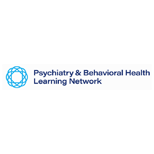In part one of this Q&A, Jennifer Dwyer, MD, PhD, Assistant Professor, Co-Director and Co-Founder, Pediatric Depression Clinic, Child Study Center, Yale School of Medicine, New Haven, Connecticut, discusses the results from her randomized, double-blind, placebo-controlled crossover trial study “Efficacy of Intravenous Ketamine in Adolescent Treatment-Resistant Depression.”
Q: What led you and your colleagues to investigate the efficacy of intravenous ketamine in adolescents with treatment resistant depression?
A: Ketamine has been under study as a rapid-acting antidepressant for adults with treatment-resistant depression (TRD) for nearly twenty years, and esketamine was recently FDA-approved for adult TRD when given in conjunction with a standard antidepressant. Advances for the treatment of pediatric TRD, in contrast, are hard to come by, and there has been little meaningful progress to guide clinicians since the conclusion of the Treatment of Resistant Depression in Adolescents (TORDIA) study, over a decade ago. There is a great need for new treatments that are safe and effective for pediatric TRD, and we hoped that this trial would be a first step towards evaluating the safety and efficacy of low-dose intravenous ketamine for adolescents who remained depressed despite receiving the standard-of-care depression treatment.
Q: Please briefly describe the study method and participants.
A: This study is a randomized, double-blind, placebo-controlled crossover trial evaluating the short-term efficacy of low-dose intravenous ketamine in adolescents (13 to 17 years old, 17 participants total) with treatment resistant depression (TRD). Here we defined TRD as having remained depressed after having at least one adequate antidepressant trial, but most of our participants had tried two or more standard antidepressants before enrolling. Over the four-week study, participants received a single dose of intravenous ketamine (dose of 0.5mg/kg infused over 40 minutes) and a single dose of intravenous midazolam (the active placebo, dosed at 0.045mg/kg infused over 40 minutes) in randomized order, separated by two weeks. The primary outcome of the study was depression symptoms (measured by the Montgomery-Asberg Depression Rating Scale (MADRS)) 24 hours after the ketamine versus 24 hours after midazolam.
Q: Please briefly describe the most significant finding(s).
A: The most significant finding was a reduction in depression scores at 24 hours-post treatments with ketamine compared to midazolam. The effect size was similar to that reported in adult studies of ketamine that have used midazolam as the active placebo. Our participants tolerated the treatments well, and there no post-treatment serious adverse events.
Jennifer Dwyer, MD, PhD, is an Assistant Professor at Yale School of Medicine in New Haven, Connecticut, in addition to serving as the Co-Director and Co-Founder or the Pediatric Depression Clinic, Child Study Center. Her study interests include treatment-refectory adolescent depression.
